
Volcanic scrub near Mono Lake
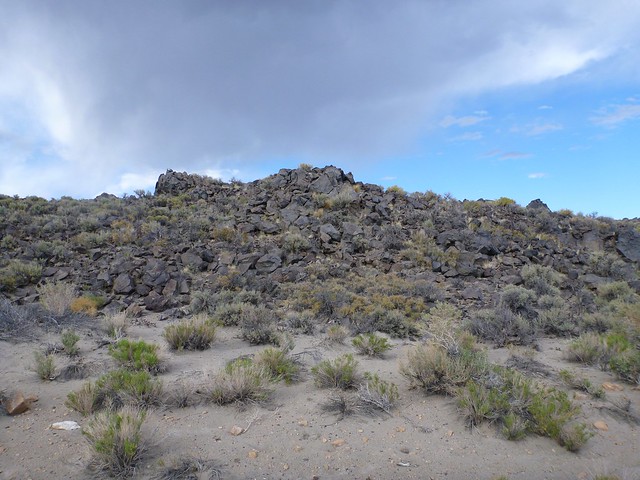
Basalt rocks and threatening skies
The event revealed itself when I stopped to take photos of a striking patch of Nevada Jointfir that was in full bloom.
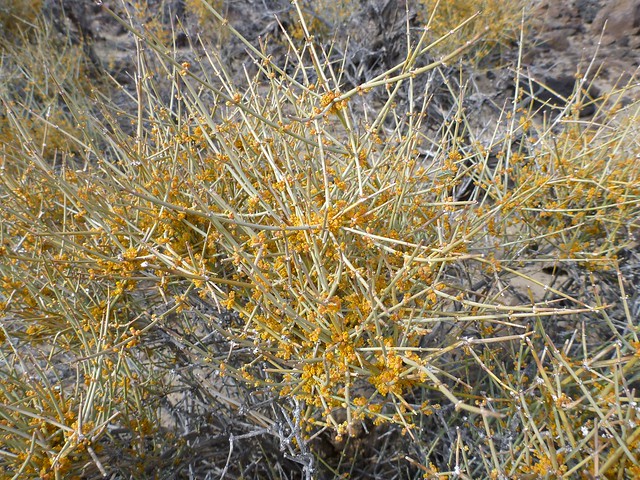
Nevada Jointfir, Ephedra nevadensis, in "full" bloom
I like Ephedras. While they might not look like much when out of bloom, I think they're pretty cool. How can't you appreciate an oddball shrub related to pine, fir and cypress trees? I.e., they're Gymnosperms, which is one reason Ephedras are called "Jointfirs."
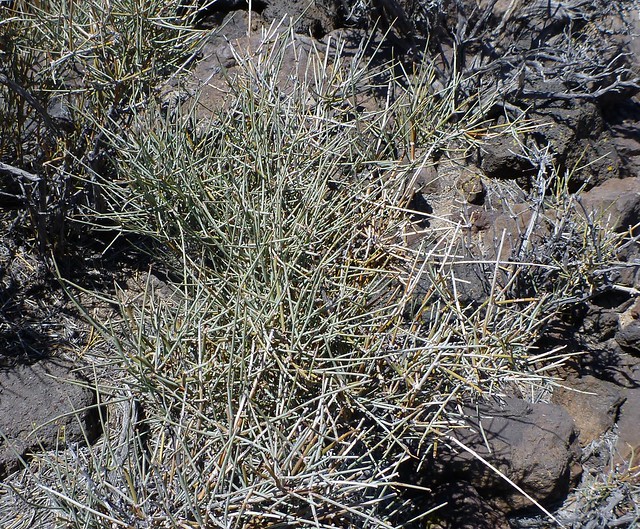
Nevada Jointfir when not in bloom isn't very "showy"

Nevada Jointfir encrusted with flowers
But Ephedras are cool for other reasons, which brings us to my interesting little encounter.
While photographing the Jointfirs, I noticed they were literally crawling with bugs. True bugs. Of the Order Hemiptera. And I believe the species Chlorochroa sayi, Say's Stink Bugs.
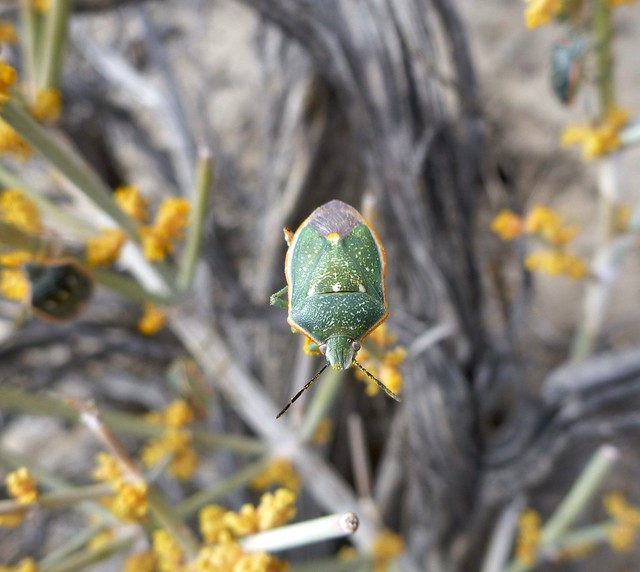
Say's Stink Bug, Chlorochroa sayi, giving me Stink Bug Eye. Think this might be a female. Note the other two in the background.
And the stink bugs were covered with Ephedra pollen.
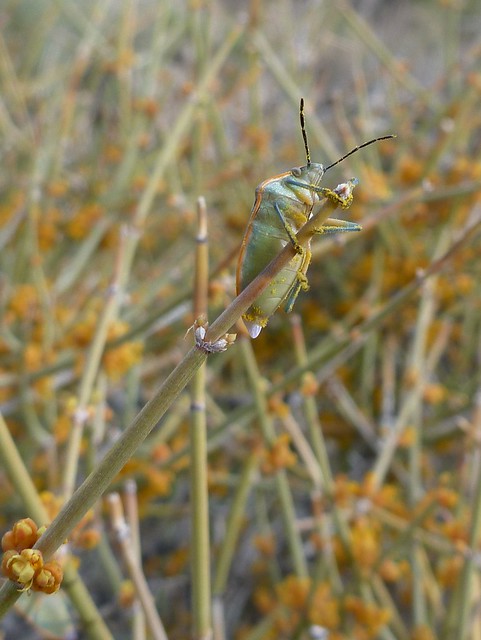
"There were lines on the mirror, lines on her face
She pretended not to notice, she was caught up in the race..."
And chasing each other all over the place.
Which, with the coming Great Basin thunderstorm in the background, had a surreal aspect to it.

Say's Stink Bugs doing the Ephedra dance under stormy skies on some nearby sagebrush
Now, you may know or notice that name "Ephedra" has a ring to it. It's the root of the terms Ephedrine and Pseudoephedrine.
Chemicals that in humans increase heart rate and metabolism, stimulate the brain, and ease breathing by opening bronchial tubes.
And the plant has long been a source of those chemicals for us humans, which is why it is often called another name: "Mormon Tea."
So the question is - are the stink bugs getting high from the Ephedra, too?
Or is there another reason? I've read that some stink bug males excrete sex pheromones - perhaps I have this all in reverse, and it's females chasing around males..?

Perhaps a male Say's Stink Bug? They were 2 apparent color morphs - one with darker green and stronger orange and black markings, and the other, as seen above, was lighter, less speckled and bright. And the darker bugs were always chasing the lighter bugs
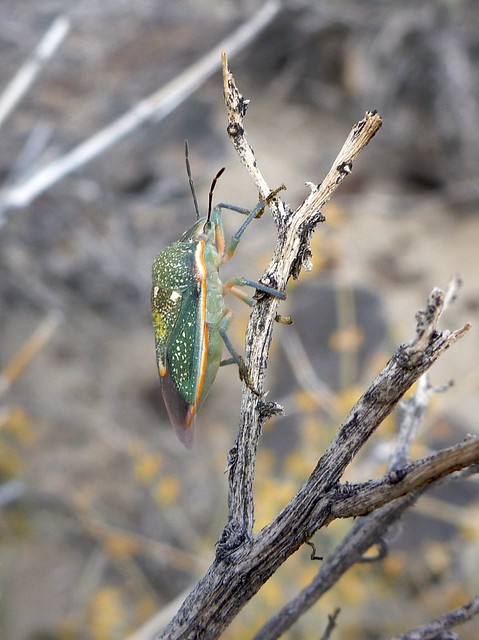
Side view of potential male Say's Stink Bug
For those interested in naming, sayi and "Say's" are in honor of Thomas Say, a frontier naturalist and god of early 1800s American entomology. He collected and described over 1,000 species, including the coyote, and one of my fave birds, Say's Phoebe, Sayornis saya.

Dark colored Say's Stink Bug chasing a lighter colored one. The behavior did not seem to be about attacking or threatening in any way
Think stink bugs get hangovers? Or have coyote-ugly mornings?
"What a party. Woke up and the brute sleeping on my 3rd tarsus was so ugly I had to chew it off to sneak out of there. Good thing I have 5 more."
====
References:
- The Jepson Herbarium: Jepson eFlora - Ephedra nevadensis
- Wikipedia - Ephedra
- Wikipedia - Gymnosperms
- Bugguide - Say's Stink Bug
- Bugguide - Chlorochroa
- Wikipedia - Thomas Say
- Eagles - Life in the Fast Lane

Nice! Say also described one of my favorite snakes: the Bullsnake (Pituophis catenifer sayi)!
ReplyDeleteNice. Evidently, aside from beetles, Say also was a total herper, and collected a bunch of snakes and lizards as well.
DeleteAnd SAY, it seems that WL Jepson was one of my uncles!
ReplyDeleteGreat description of a nice flowering event in one of my favourite Orthoptera spots.
D Rentz